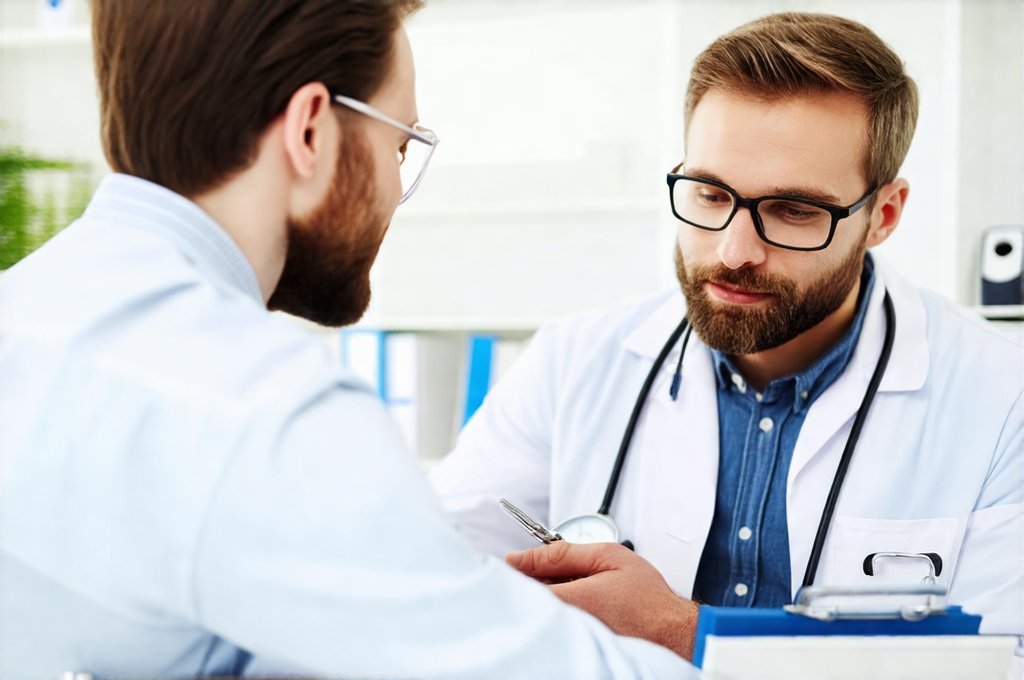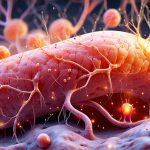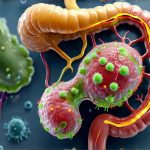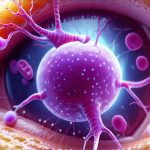The human gut is often described as an ecosystem, teeming with trillions of microorganisms – bacteria, archaea, fungi, viruses – collectively known as the gut microbiota. This complex community isn’t merely a passive passenger within us; it’s actively involved in numerous physiological processes critical to our health, including digestion, immune system regulation, and even mental wellbeing. For years, probiotic supplementation has been promoted as a means to positively influence this gut ecosystem, aiming to introduce beneficial bacteria that can improve overall health. However, the reality of achieving consistent benefits from probiotics is often more nuanced than advertised, with varying degrees of success reported across individuals. A key reason behind this variability lies in an increasingly understood phenomenon: the formation of gut biofilms.
These aren’t like the slimy film on a poorly cleaned bathtub. Gut biofilms are complex, structured communities of microorganisms encased within a self-produced matrix of extracellular polymeric substances (EPS). This EPS acts as a protective barrier, shielding the microbial community from external stressors – including our immune system, antibiotics, and even probiotic interventions. Understanding how these biofilms form, their impact on gut health, and crucially, how they influence the effectiveness of probiotics is vital for developing strategies to optimize microbiome modulation and improve therapeutic outcomes. The interplay between biofilms and probiotics represents a significant frontier in gut health research, challenging traditional approaches to supplementation and highlighting the need for more targeted interventions. Understanding the role of gut inflammation is crucial here, as biofilms often exacerbate these issues.
Understanding Gut Biofilms: Formation & Composition
Biofilm formation isn’t a sudden event; it’s a dynamic process that unfolds in several stages. It begins with the initial attachment of microorganisms to the gut lining or existing microbial colonies. This attachment is often facilitated by surface structures like flagella and pili, enabling bacteria to adhere despite the shear forces within the digestive tract. Once attached, these microbes begin to colonize and proliferate, communicating with each other through chemical signals in a process called quorum sensing. Quorum sensing allows them to coordinate their behavior – including EPS production – as population density increases. This leads to the development of a mature biofilm characterized by its structural complexity and resilience.
The composition of gut biofilms isn’t static; it varies depending on factors like diet, genetics, immune status, and antibiotic use. While certain bacterial species are more prone to biofilm formation (e.g., Klebsiella pneumoniae, some strains of Escherichia coli), biofilms are typically polymicrobial – meaning they contain a diverse mix of bacteria, fungi, and even viruses. This diversity contributes to the overall stability and functionality of the biofilm. The EPS matrix itself is composed of polysaccharides, proteins, extracellular DNA, and lipids, providing not only physical protection but also serving as a nutrient reservoir for the microbial community. This complex structure makes biofilms significantly more resistant to disruption than planktonic (free-floating) bacteria.
Biofilms aren’t inherently harmful; in fact, they play a role in maintaining gut homeostasis by creating microenvironments that support diverse microbial communities. However, dysbiotic biofilms – those dominated by potentially pathogenic species or exhibiting excessive EPS production – can contribute to inflammation and impaired gut barrier function. These biofilms can also act as reservoirs for opportunistic infections, making individuals more susceptible to disease. Therefore, understanding the specific composition and characteristics of an individual’s gut biofilm is crucial for developing targeted interventions. This is where gut testing becomes invaluable in tailoring approaches.
The Role of Extracellular Polymeric Substances (EPS)
The EPS matrix is arguably the defining feature of a biofilm, providing the structural integrity and protective barrier that sets it apart from planktonic bacteria. This complex mixture isn’t merely a passive shield; it actively influences the behavior of the microbial community within. Different components of the EPS contribute to different properties. For example:
- Polysaccharides provide the bulk of the matrix, creating a physical barrier against antibiotics and immune cells. They also provide a source of carbon for microbial growth.
- Proteins can act as adhesion factors, helping bacteria attach to surfaces, and they can also contribute to biofilm stability.
- Extracellular DNA (eDNA) plays a surprisingly important role in biofilm formation, acting like a “scaffolding” that holds the community together. It’s released by dying cells within the biofilm and contributes to its structural integrity.
The composition of EPS varies depending on the species present in the biofilm, making it difficult to target effectively with broad-spectrum antimicrobial agents. Furthermore, EPS can create gradients of pH and oxygen concentration within the biofilm, influencing microbial metabolism and antibiotic penetration. This makes biofilms remarkably resilient environments where microbes can survive even under harsh conditions. Disrupting EPS is therefore a key strategy for combating dysbiotic biofilms, but doing so requires innovative approaches that go beyond traditional antibiotics. Considering common nutrition myths about nausea can help refine dietary strategies impacting biofilm development.
Biofilms & Gut Inflammation: A Vicious Cycle
Dysbiotic gut biofilms are increasingly recognized as contributors to chronic inflammation within the digestive tract and beyond. The presence of pathogenic species within these biofilms can trigger an immune response, leading to the release of inflammatory cytokines. However, the biofilm itself protects the bacteria from immune clearance, creating a vicious cycle where inflammation persists even in the face of ongoing immune attack. This chronic inflammation can damage the gut lining, increasing intestinal permeability – often referred to as “leaky gut” – allowing bacterial products and toxins to enter the bloodstream, further exacerbating systemic inflammation.
The EPS matrix also contributes to this inflammatory process. It can physically hinder the access of immune cells to the bacteria within the biofilm, reducing their ability to clear the infection. Furthermore, certain components of the EPS can directly activate immune cells, triggering an inflammatory response. This interplay between biofilms, immunity and inflammation highlights the complex relationship between gut health and systemic disease. Gut inflammation often manifests as fatigue, making diagnosis even more difficult.
Probiotic Effectiveness in the Face of Biofilms
Probiotics aim to restore balance within the gut microbiota by introducing beneficial bacteria that can compete with pathogens, modulate the immune system, and improve gut barrier function. However, their effectiveness is significantly hampered by the presence of biofilms. – Probiotics often struggle to colonize effectively in a biofilm-dominated environment because they face competition from established microbial communities encased within the protective EPS matrix. – The EPS acts as a physical barrier, preventing probiotics from reaching their intended targets and exerting their beneficial effects. – Even if probiotics can penetrate the biofilm, they may be unable to outcompete the resident bacteria due to differences in metabolic activity or quorum sensing signals.
Furthermore, some probiotic strains themselves are capable of forming biofilms, potentially contributing to dysbiosis if they become overly dominant. This highlights the importance of selecting probiotic strains that don’t readily form robust biofilms and focusing on strategies to disrupt existing biofilms before or alongside probiotic supplementation. Emerging research focuses on combining probiotics with biofilm-disrupting agents – such as enzymes capable of degrading EPS – to enhance their effectiveness. Another promising approach involves using phage therapy, employing viruses that specifically target bacteria within the biofilm, leaving beneficial species unharmed. Ultimately, a more holistic understanding of gut biofilms is essential for optimizing probiotic interventions and maximizing their therapeutic potential. The impact of antibiotics on gut health should also be considered, as they often disrupt the microbiome and promote biofilm formation. Long-term indigestion and acid exposure can contribute to these issues, creating a challenging environment for probiotic colonization and increasing the risk of biofilm development. Finally, understanding vagus nerve regulation is vital as it directly impacts gut motility and microbiome composition.


















